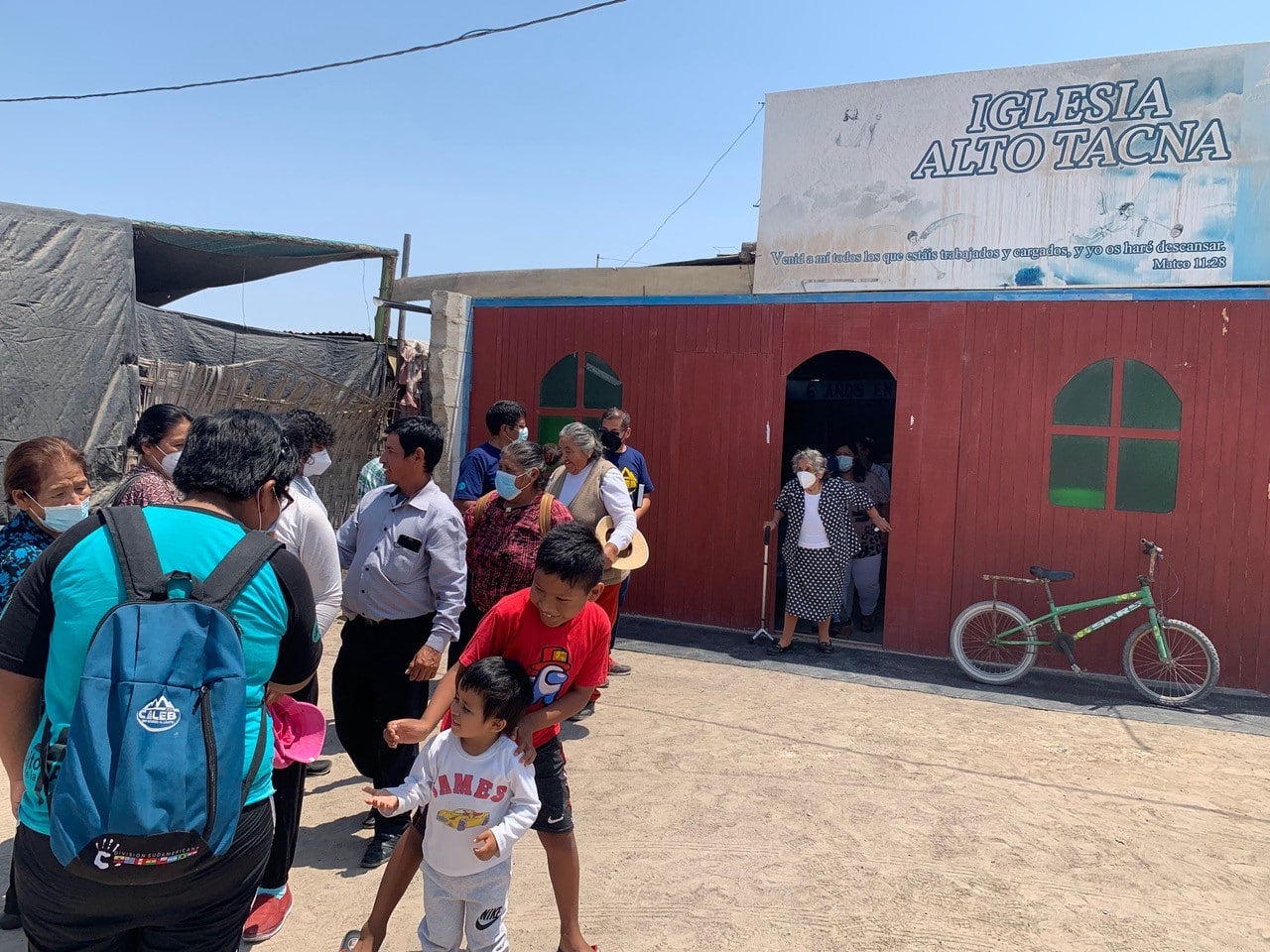
At first glance, the city of Tacna doesn’t seem too different from any other medium-size city in Peru. There is the requisite grid of streets, concrete block-style buildings, and glorious cathedrals in the town square—the remnants of its colonial past.
But push through the city center and up into the elevated perimeters and you’ll see that Tacna is in a long desert valley between two plateaus, bursting with buildings, streets, and cars. On one end, the city butts against layers of sandy hills. On the other, toward the southwestern side, there is the space where the sun sets, and the Chilean border.
Maranatha first visited Tacna during the 2005-06 effort that saw a school and 100 Seventh-day Adventist churches constructed, including three in Tacna. The results of those projects were so successful that the Adventist leadership in Peru asked Maranatha to return for a second campaign. So in December 2019, Maranatha kicked off a new commitment to build another school, some water wells, and churches for congregations without a proper place of worship. While the majority of the projects are on the outskirts of Lima, Peru’s capital city, there is one congregation in Tacna that made it on Maranatha’s list to receive a new church.
The Alto Tacna Seventh-day Adventist Church is composed of 45 members who live on one of the plateaus rising above the main city of Tacna. It was founded eight years ago by members who had once belonged to El Faro Seventh-day Adventist Church, located in the lower valley. Francisco Nina was one of those members. Given his residence in Alto Tacna, he remembers walking down and up the mountain from his home to church, several times a week.
“We walked down, and it took us almost 40 minutes, sometimes 50 minutes,” Nina says. “And at night we would also have to walk up, which was very hard for us, and I prayed a lot about it.”
Finally, Nina and some others decided to start a group in Alto Tacna. Twelve people began meeting in Nina’s small home, having Bible studies and worshiping together each week. In the meantime, they saved money to go toward buying a plot of land.

In 2013, they succeeded in purchasing a site. They erected a temporary structure, using thin plywood and other scraps of wood, bamboo, tin, rubber, and plastic bags.
“The Alto Tacna church is made with materials—I can’t say they’re recycled, but they’re quite brittle,” Maribel Coarita, one of the elders, says. “The floor is still made of sand. We have no floor. We covered it with some sacks to keep the place from getting dusty.”
It keeps them somewhat sheltered from the hot sun and rain, but it is in no way representative of a proper church. Coarita says it gets unbearably hot sometimes, despite the addition of fans. Also, it isn’t safe. “Sometimes, people want to help us and donate equipment or something, but we can’t take anything because it’s not safe. We’re afraid that someone might come and steal something,” says Coarita. Anything valuable they have has to be locked into a china cabinet.
Sabbath School classes take place in the outdoor corridor next to the church, where people sit under tarps and on rickety benches. The children’s room, made of more scrap materials, is tucked in the back corner of the property, crammed with a small table and plastic chairs.
Coarita says they’ve done their best to organize outreach activities, to motivate the local community to visit. The social activities go well, but once people come to the church itself, the structure’s condition drives them away. “The problem was that many of them come and see that it’s a simple church, and they don’t feel comfortable. They don’t feel like sitting here and relaxing,” Coarita says. “I think that building a church here will be very important because the neighbors will see a church where they can worship God, a place they can go to and learn.”
After years of prayer, the Alto Tacna congregation finally received a new place of worship—an actual building of block walls, a steel roof, and a concrete floor. In July 2022, 150 volunteers with the Ultimate Workout, Maranatha’s teens-only project, arrived in Peru to build a new sanctuary for the congregation. They worked together to build the walls of the church while also doing a variety of outreach in the community. This fall, Maranatha’s in-country crew is installing the roof and painting the church.
“We are very grateful, first to God, for this dream that has become reality—the construction of the Alto Tacna church,” Coarita says. “A strong hug to each of you, and we will soon meet again either here on this earth or at the Second Coming of Christ. Thank you very much, Maranatha!”
The original version of this story was posted in Issue 3, 2022, of Maranatha Volunteers International’s The Volunteer magazine.